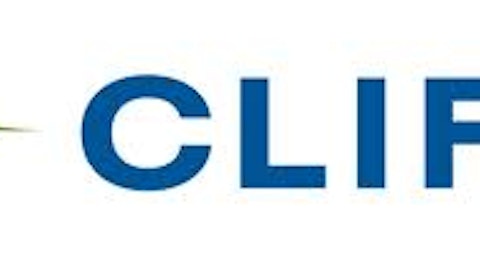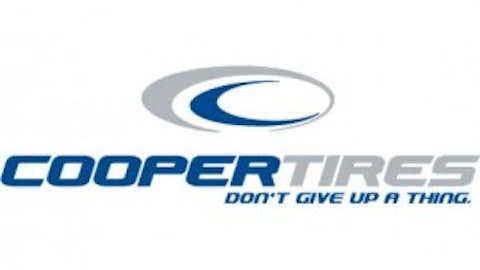Debt can be a terrible problem for some companies and can drag down even the best businesses. So is debt manageable or a major concern at these three companies that would otherwise appear to be good opportunities for investment?
Victim of the housing bubble

First up is USG Corporation (NYSE:USG). USG has attracted some big-name investors, including Warren Buffett. However, this holding is almost a nonexistent share of Buffett’s portfolio ($200 million) and is left over from an acquisition many years ago, so I wouldn’t place to much weight on this. However, Buffett also controls a significant portion of USG’s debt.
| Metric | Value |
|---|---|
| Total debt | $2.3 billion |
| Net debt | $1.8 billion |
| Net debt to equity | 128 |
| Net debt to EBITDA | 56 |
| Largest debt issue | $500 million |
| Average maturity | 2017 |
| Average interest rate | 8% |
| Interest expense, Q2 2013 | $50 million |
| Interest cover Q2 2013 by EBITDA | 2.3 |
Source: Morningstar.
USG Corporation (NYSE:USG)’s debt position is improving after it struggled through the majority of the last five years as orders slumped during the housing crisis. Indeed, in the first two quarters of this year the company reported a positive net income for the first time since 2008. EBIT interest cover on debt rose from 0.9 times during Q4 2012 to 1.7 times during the first quarter of this year.
In addition, the company’s cash flow is improving, with free cash flow positive for three of the last four quarters (the negative quarter was due to a fall in accounts receivable).
USG Corporation (NYSE:USG) has $500 million in cash on its balance sheet, so debt repayments should be manageable. That said, with an average debt maturity of 2017, the company could be exposed to interest rate changes, which would place pressure on income and the company’s ability to refinance. Moreover, with a net debt-to-EBITDA ratio of 56, the company will not be able to pay down debt anytime soon and will have to roll over most of the issues.
All in all, USG Corporation (NYSE:USG)’s debt is manageable for the time being, so long as the housing recovery continues. However, the company could be sailing into stormy waters when the majority of its huge debt pile matures in 2017. That said, Buffett’s $300 million loan is convertible into stock and will not need to be paid back.
Don’t discount this old dog just yet
Next up is Pitney Bowes Inc. (NYSE:PBI) with a debt-to-EBITDA ratio of three.
Pitney Bowes Inc. (NYSE:PBI)’s outlook is brighter than that of USG Corporation (NYSE:USG), as the company is cash-flow positive, has a longer average maturity and the average interest rate is almost half of what USG is having to pay.
| Metric | Value |
|---|---|
| Debt | $3.6 billion |
| Net debt | $3 billion |
| Net debt to equity | 30 |
| Net debt to EBITDA | 3 |
| Largest debt issue | $500 million |
| Average maturity | 2018 |
| Average interest rate | 5% |
| Interest expense, Q2 2013 | $31 million |
| Interest cover Q2 2013 by EBITDA (ex ex) | 4.8 |
Source: Morningstar.
In addition, Pitney Bowes Inc. (NYSE:PBI) paid down $300 million in debt earlier this year from cash on hand, and the next maturity is in August 2014 — a $300 million issue easily payable from $600 million in cash the company has in the bank. The next maturity is in March 2015 — another $300 million debt issue again, easily payable from cash currently on hand.
Moreover, Pitney Bowes Inc. (NYSE:PBI)’s longest-dated maturity is 2037 — a $500 million issue locked in at 5.25%, which gives the company plenty of time to pay back the issue. (It is probable that before the issue reaches maturity, interest rates will rise, so Pitney has done well to lock in this low interest rate, which is below what many sovereigns are paying for borrowing over a similar period.)
Pitney Bowes Inc. (NYSE:PBI)’s debt currently seems controllable, and the company’s outlook is improving all around.
Debt is high but manageable at this tire producer
The Goodyear Tire & Rubber Company (NASDAQ:GT) has a debt-to-equity ratio of 5.7 but a debt-to-EBITDA ratio of only 2.2. In addition, the company’s average debt maturity is locked in at 2021 at 6.5%. Interest expenses were covered 18 times by EBITDA during the second quarter of this year, leading me to conclude very quickly that the company has plenty of financial firepower to sustain its debt.
| Metric | Value |
|---|---|
| Total debt | $6.5 billion |
| Net debt | $4 billion |
| Net debt to equity | 5.7 |
| Net debt to EBITDA | 2.2 |
| Largest debt issue | $1 billion |
| Average maturity | 2021 |
| Average interest rate | 6.5% |
| Interest expense Q2 2013 | $102 million |
| Interest cover Q2 2013 by EBITDA | 18 |
Source: Morningstar.
Moreover, The Goodyear Tire & Rubber Company (NASDAQ:GT) has $2.5 billion in cash on its balance sheet, and this is growing at a rate of $100 million a quarter. However, debt has risen 16% year on year, though net debt has grown slightly less at 14%.
Still, the company’s first debt maturity is fixed in 2015 and is worth $400 million. The next is 2020, worth $1 billion — both easily payable with cash in the bank. The longest-dated maturity is 2034, worth $350 million and locked in at a solid rate of 4%.
Overall, although The Goodyear Tire & Rubber Company (NASDAQ:GT)’s debt is high, the company is easily able to sustain it over both the short term and the longer term.
Both Pitney and The Goodyear Tire & Rubber Company (NASDAQ:GT) have long debt maturities and low interest rates; couple this with a large amount of cash available, and the companies seem more than able to sustain their debt piles. USG, however, looks to be sailing into stormy waters. The company’s average rate of interest on debt is high, with the majority of issues falling due before the end of the decade, meaning that the company will have to roll over the debt at a potentially higher interest rate.
The article Is Debt a Concern at These Three Companies? originally appeared on Fool.com and is written by Rupert Hargreaves.
Fool contributor Rupert Hargreaves has no position in any stocks mentioned. The Motley Fool has no position in any of the stocks mentioned.
Copyright © 1995 – 2013 The Motley Fool, LLC. All rights reserved. The Motley Fool has a disclosure policy.





